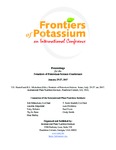Use este identificador para citar ou linkar para este item:
http://www.alice.cnptia.embrapa.br/alice/handle/doc/1069571Registro completo de metadados
| Campo DC | Valor | Idioma |
|---|---|---|
| dc.contributor.author | VOLF, M. | pt_BR |
| dc.contributor.author | BENITES, V. de M. | pt_BR |
| dc.contributor.author | ROSOLEM, A. C. | pt_BR |
| dc.contributor.author | CRUSCIOL, A. C. | pt_BR |
| dc.contributor.author | MORAES, F. M. | pt_BR |
| dc.contributor.author | MENEZES, F. J. | pt_BR |
| dc.contributor.author | SILVA, C. A. | pt_BR |
| dc.date.accessioned | 2017-05-15T11:11:11Z | pt_BR |
| dc.date.available | 2017-05-15T11:11:11Z | pt_BR |
| dc.date.created | 2017-05-15 | pt_BR |
| dc.date.issued | 2017 | pt_BR |
| dc.identifier.citation | In: FRONTIERS OF POTASSIUM SCIENCE CONFERENCE, 2017, Rome. Proceedings... Peachtree Corners: International Plant Nutrition Institute, 2017. Ref. P185-P193. | pt_BR |
| dc.identifier.uri | http://www.alice.cnptia.embrapa.br/alice/handle/doc/1069571 | pt_BR |
| dc.description | The original soil exchangeable potassium (K) concentrations are at or above critical levels in many Brazilian Cerrado (savanna) soils. Hence, many cropped areas have been fertilized with low K rates, below crop requirements, but yields have not decreased as expected. In these areas, topsoil exchangeable K analyses have shown no decrease, or even some increase. The aim of this study was to evaluate exchangeable and non-exchangeable K forms in soils under different uses and managements in the Vale do Araguaia region of Mato Grosso state, Brazil. Soil samples were taken from 91 sites at depths of 0-20 cm and 20-40 cm, in areas under grain crops, pasture and native vegetation (Cerrado or forest). Silt content ranged from 12 to 175 g kg-1 and clay from 90 to 595 g kg-1, and the predominant clays were kaolinite, hematite, goethite and gibbsite. Under pasture, the soils had high levels of exchangeable K in the 0-20 cm layer and high levels of non-exchangeable K from 20 to 40 cm. This can be a result of the absorption of non-exchangeable K by grasses, the main cultivated species, by recycling K to the exchangeable fraction in the topsoil. There was a positive relationship between silt and non-exchangeable K contents. Ratios of exchangeable to non-exchangeable K were over 3 in soils with silt above 70 g kg-1, in which non-exchangeable K was over 100 mg dm-3. Cover crops growing in soils rich in silt take up non-exchangeable K and exchangeable K from deeper layers, which is recycled to the soil as exchangeable K upon plant residue mineralization, which may have been responsible for the maintenance or increase in exchangeable K levels in the 0-20 cm layer in areas where low K rates have been used for grain production. | pt_BR |
| dc.language.iso | eng | eng |
| dc.rights | openAccess | eng |
| dc.subject | Vale do Araguaia | pt_BR |
| dc.title | Silt as K source for crops in tropical soils. | pt_BR |
| dc.type | Artigo em anais e proceedings | pt_BR |
| dc.date.updated | 2017-06-02T11:11:11Z | pt_BR |
| dc.subject.thesagro | Solo | pt_BR |
| dc.subject.thesagro | Cerrado | pt_BR |
| riaa.ainfo.id | 1069571 | pt_BR |
| riaa.ainfo.lastupdate | 2017-06-02 | pt_BR |
| dc.contributor.institution | MARCELO RAPHAEL VOLF, UNESP; VINICIUS DE MELO BENITES, CNPS; CIRO ANTONIO ROSOLEM, UNESP; CARLOS ALEXANDRE COSTA CRUSCIOL, UNESP; MILTON F. MORAES, UFMT; JUNE FARIA SCHERRER MENEZES, UNIRV; ANA C. SILVA, DALCIN LABORATORY OF SOIL AND PLANT. | pt_BR |
| Aparece nas coleções: | Artigo em anais de congresso (CNPS)  | |
Arquivos associados a este item:
| Arquivo | Descrição | Tamanho | Formato | |
|---|---|---|---|---|
| 2017004.pdf | 276.93 kB | Adobe PDF |  Visualizar/Abrir |









